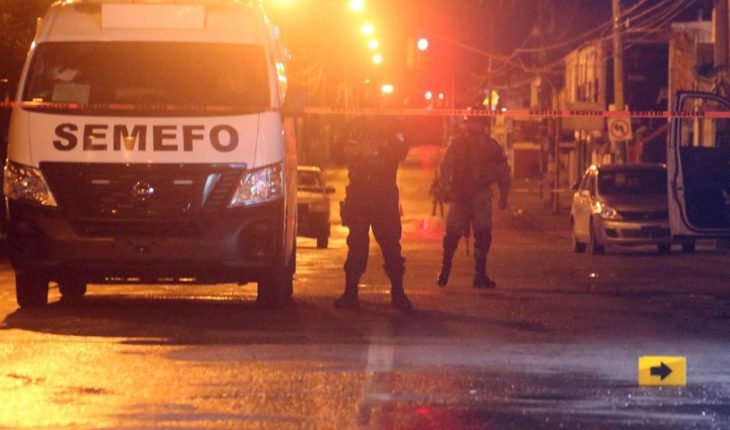In just over a decade Mexico has spent more than 600 billion pesos on a poorly designed crime prevention strategy of origin, impossible to measure, incongruous and inconsistent, and that in the light of the situation of insecurity and violence in which the country is today has not yielded results.
This is the conclusion reached by a special report of the Federation’s Superior Audit (ASF), which assessed all components of the public policy on crime prevention implemented by Mexico from its conception in 2008 until the end of 2018.
You may be interested: Master Scam, not a day in THE EPN sex-enactd work were stopped diverting public resources
This policy, the experts explain, is based on three components: social prevention, crime containment and prevention of criminal recidivism. From them, governments have implemented multiple plans and actions to address the growing incidence of crime and the perception of insecurity.
However, experts caution that these are approaches that, while seem to correctly identify the causes of the problem, have actually resulted in isolated, incongruous and disjointed actions that prevent a comprehensive response to the crisis of violence.
The problem is compounded because even with changes in administrations, the schemes maintain the same ineffective and costly inertia.
“If the design and implementation of public policy of crime prevention is maintained under current conditions, public safety conditions are expected to worsen, due to the persistence in the increase in crime incidence, caused by the absence of comprehensive attention to the commission of likely criminal acts to prevent them from being consummated,” the audit states.
Millionaires costs
According to the auditors’ analysis, from 2008 to 2018 our country has spent 600 billion pesos on the implementation of the public crime prevention policy. This is a strategy whose cost has been increasing year on year.
As long as 2008 27 billion pesos were invested (already in constant numbers), by 2013 the investment amounted to 56,884 million pesos, and in 2018 it reached 66 billion pesos annually.
This means that in that period the annual cost of the crime prevention policy skyrocketed more than 144%.
What have the more than 600 billion invested in? According to the ASF report, 53.7% have gone into actions related to crime restraint, which mainly translate into operational operations for the deterrence of crime and the timely detection of financial wrongdoing.
27.7% in prevention of criminal recidivism, which means primarily in investments in the prison system; and only 6% in social prevention actions consisting of the implementation of national prevention programmes, outreach campaigns, etc. The rest has gone in unidentified schemes.
“It was identified that the budget design is more consistent rather than sufficient, in terms of addressing the causes of the public problem, because, while the identified programmes exercise resources and are focused on the attention of the three sub-components of crime prevention policy, they do not address the total causes established,” the report states, says the report
Disaster
According to the ASF, the three components of the prevention policy to which resources have been earmarked are well differentiated. The problem is that in its implementation it presents “deficiencies, inadequacies and inconsistencies” that prevent even measuring its scope and less its impact.
“This, as a result of a frailty policy design, since, in principle, there is a lack of an official and unequivocal definition of what crime prevention is, as well as a regulatory framework that regulates, in a comprehensive and precise way, the policy models that comprise it, pointing out the responsibilities of the authorities that must implement it,” the ASF states.
In this way we have that while we have to work on social prevention, the prevalence of risk factors associated with violence continues. Even when the crime is sought to be contained, in reality this does not happen in most cases and even illicit offences diversify. And while resources are allocated to the prevention of criminal recidivism, there are actually no effective rehabilitation programmes.
Auditors found the lack of a serious programmatic design that sets objectives, targets and indicators to guide its operation, evaluation and accountability aspects particularly serious. The absence of these indicators also closes the door to any possibility of measuring and correcting their scopes, and prevents the analysis and setting of responsibilities.
In this context, the Audit notes that, while it is not possible to build an accurate assessment of the results of the policy implemented by Mexico to prevent crime, due to the aforementioned lack of indicators, it is noted that its effect has been zero given the high rates of violence recorded by the country, even with homicides reaching record levels.
“Prevention measures are not adequate to inhibit risk factors that increase the likelihood of crime commissioning, are not effective, or timely, to ensure containment, and are small enough to reduce crime incidence,” concludes the ASF.
What to do?
From the point of view of the Audit, what Mexico requires is to generate a new anti-crime policy that as a starting point is given to the task of defining a clear concept of what is “crime prevention”, and that from this are structured diagnostics on the material magnitude of the problem, its causes and its effects, and from this the appropriate measures are generated to inhibit it.
It should be, the report stresses, a “comprehensive and institutionalized public crime prevention policy, with mechanisms to measure its effectiveness”.
And at a more specific level, auditors suggest creating the necessary conditions to facilitate coordination between units that can contribute to reducing the factors that lead to crime; implement prevention programmes in areas already in crime or at serious risk; and to define police actions to constrain crime on the basis of a coherent, justified strategy with clear objectives that can be assessed and needed to be corrected.
All this is clear in that it is mandatory to have “qualified and qualified human resources” to carry out crime prevention actions. Something that seems obvious and yet does not happen to date.
What we do in Animal Político requires professional journalists, teamwork, dialogue with readers and something very important: independence. You can help us keep going. Be part of the team.
Subscribe to Animal Politician, receive benefits and support free journalism.#YoSoyAnimal
translated from Spanish: Mexico spent 600 thousand mdp on incongruous and failed anti-crime plan: ASF
February 25, 2020 |





